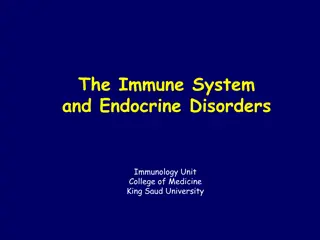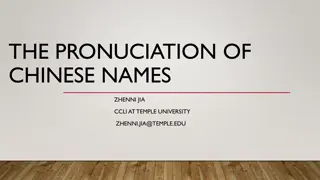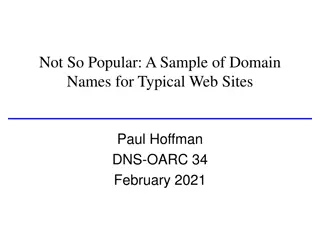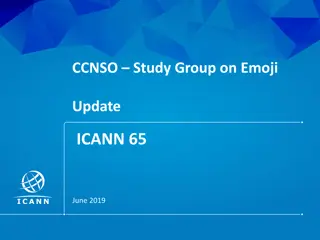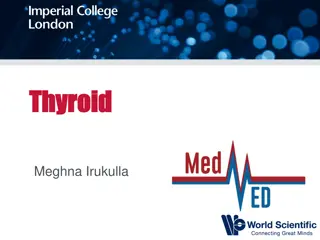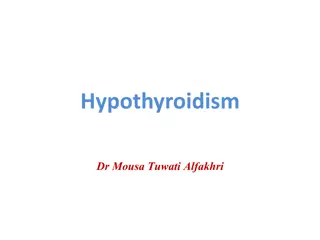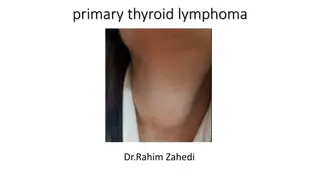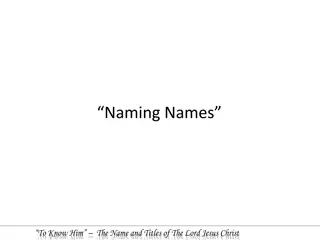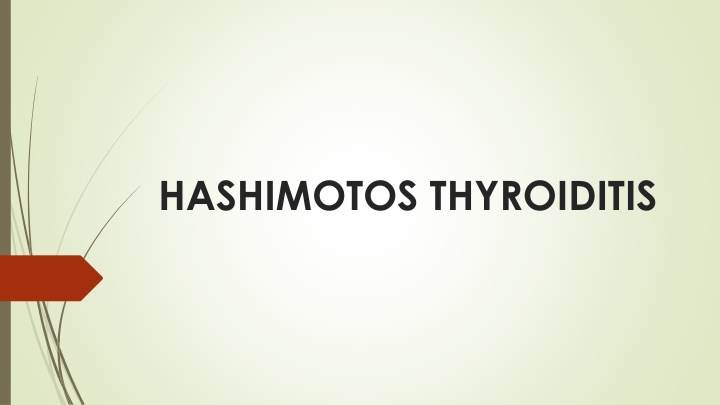
Overview of Hashimoto Thyroiditis: Names, Mechanisms, and More
Hashimoto Thyroiditis, also known as Hashimoto's Thyroiditis, is an autoimmune condition affecting the thyroid gland. It involves immune-mediated destruction of thyroid cells leading to hypothyroidism. This descriptive content covers the various aspects of the disease including alternative names, pathogenic mechanisms, genetic associations, clinical features, and potential complications such as malignancies. Explore images and information to gain insights into this common thyroid disorder.
Download Presentation

Please find below an Image/Link to download the presentation.
The content on the website is provided AS IS for your information and personal use only. It may not be sold, licensed, or shared on other websites without obtaining consent from the author. If you encounter any issues during the download, it is possible that the publisher has removed the file from their server.
You are allowed to download the files provided on this website for personal or commercial use, subject to the condition that they are used lawfully. All files are the property of their respective owners.
The content on the website is provided AS IS for your information and personal use only. It may not be sold, licensed, or shared on other websites without obtaining consent from the author.
E N D
Presentation Transcript
HASHIMOTO THYROIDITIS 1.Other name of Hashimoto thyroiditis 2.Sex predilection for Hashimoto thyroiditis 3.Basic pathogenic mechanism of the disease 4.Gene associated with Pathogenesis of Hashimoto thyroiditis 5.Antibodies responsible for destruction of thyroid cells
HASHIMOTO THYROIDITIS 6. Immunologic mechanism for destruction of thyroid 7. Gross features of Hashimoto thyroiditis 8. Microscopic features of Hashimoto thyroiditis 9. Presenting clinical features in disease 10. Malignancies which can arise in the background of Hashimoto thyoiditis
HASHIMOTO THYROIDITIS 1. Other name of Hashimoto thyroiditis
HASHIMOTO THYROIDITIS 1. Other name of Hashimoto thyroiditis - Struma lymphomatosa - First described by Hakaru Hashimoto , Japanese ophthalmologist in 1912
HASHIMOTO THYROIDITIS 2. Sex predilection for Hashimoto thyroiditis
HASHIMOTO THYROIDITIS 2. Sex predilection for Hashimoto thyroiditis - Most common in females with female to male ratio of 10:1 to 20:1 - Common age group is 45 yrs to 65yrs
HASHIMOTO THYROIDITIS 3. Basic pathogenic mechanism of the disease
HASHIMOTO THYROIDITIS 3. Basic pathogenic mechanism of the disease - Autoimmune destruction of thyroid
HASHIMOTO THYROIDITIS 4. Gene associated with Pathogenesis of Hashimoto thyroiditis
HASHIMOTO THYROIDITIS 4. Gene associated with Pathogenesis of Hashimoto thyroiditis Cytotoxic T-Lymphocyte associated 4 (CTLA -4) gene The protein produced by this gene down regulates the T cell functioning. Polymorphism of CTLA -4 leads to increased activity of T-lymphocyte
HASHIMOTO THYROIDITIS 5. Antibodies responsible for destruction of thyroid cells
HASHIMOTO THYROIDITIS 5. Antibodies responsible for destruction of thyroid cells - Thyroglobulin antibodies - Thyroid microsomal antibodies - Thyroid peroxidase antibodies - TSH receptor antibodies
HASHIMOTO THYROIDITIS 6. Immunologic mechanism for destruction of thyroid
8. Microscopic features of Hashimoto thyroiditis
HASHIMOTO THYROIDITIS 9. Presenting clinical features in disease
HASHIMOTO THYROIDITIS 10. Malignancies which can arise in the background of Hashimoto thyoiditis
HASHIMOTO THYROIDITIS 10. Malignancies which can arise in the background of Hashimoto thyroiditis - B cell non-hodgkins lymphoma - Papillary carcinoma






